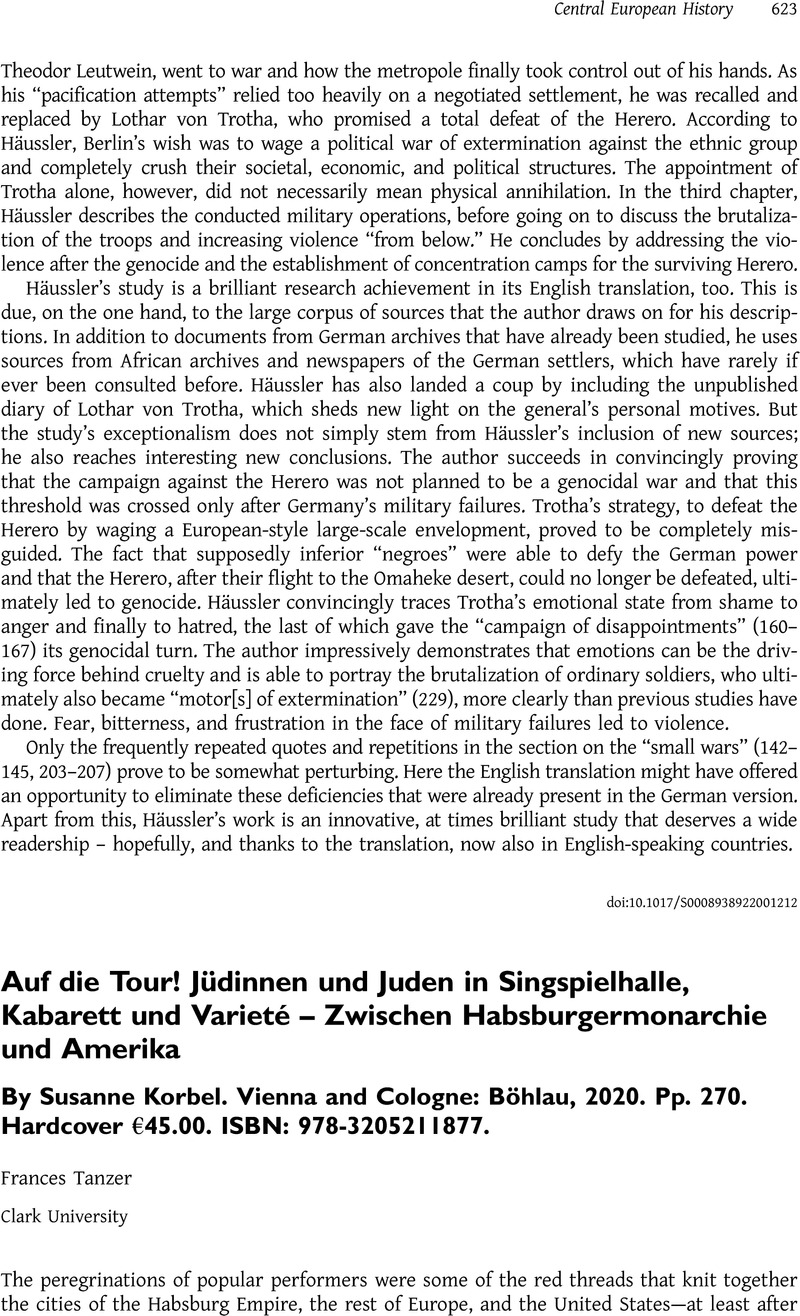No CrossRef data available.
Article contents
Auf die Tour! Jüdinnen und Juden in Singspielhalle, Kabarett und Varieté – Zwischen Habsburgermonarchie und Amerika By Susanne Korbel. Vienna and Cologne: Böhlau, 2020. Pp. 270. Hardcover €45.00. ISBN: 978-3205211877.
Review products
Auf die Tour! Jüdinnen und Juden in Singspielhalle, Kabarett und Varieté – Zwischen Habsburgermonarchie und Amerika By Susanne Korbel. Vienna and Cologne: Böhlau, 2020. Pp. 270. Hardcover €45.00. ISBN: 978-3205211877.
Published online by Cambridge University Press: 05 January 2023
Abstract
An abstract is not available for this content so a preview has been provided. Please use the Get access link above for information on how to access this content.

- Type
- Book Review
- Information
- Copyright
- Copyright © The Author(s), 2022. Published by Cambridge University Press on behalf of Central European History Society of the American Historical Association


